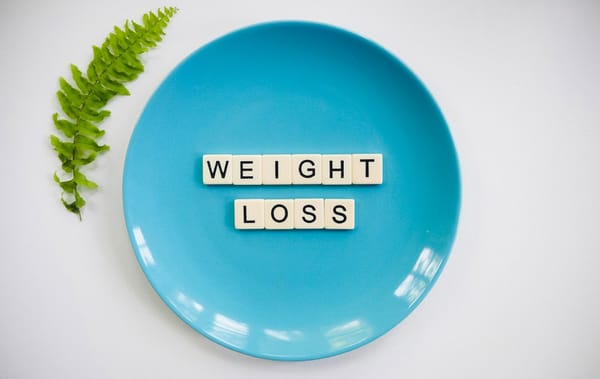TDEE vs. BMR: What’s the Difference and Why Does It Matter?

Understanding what your body requires in terms of energy is of utmost importance for whatever it is you want to achieve in life, especially when looking at weight-related goals. Two of the most talked-about terms in the world of weight management are Total Daily Energy Expenditure, more commonly referred to as TDEE, and Basal Metabolic Rate, or BMR.
While these concepts are interrelated, they refer to completely different factors in the body's energy-burning processes. This article will define and explain these terms, then provide the reader with knowledge critical to realizing health and fitness by differentiating TDEE from BMR.
What is BMR?
BMR simply stands for Basal Metabolic Rate. The Basal Metabolic Rate number refers to the number of calories your body needs to perform the most fundamental life-sustaining functions while at rest. These functions are simply the ability to breathe, circulate blood, regulate body temperature, and support other basic bodily processes.
The energy expenditure at this point is used only to keep the person alive, completely ignoring any activity exerted during movement or exercise.
In lay terms, the BMR simply shows the least amount of energy intake your body needs in order to maintain vital functions. It is affected by indicators such as weight, age, sex, genetic inheritance, and muscle mass. Generally, more muscle mass means a higher BMR, as maintaining more muscle requires additional energy compared to fat.
What is TDEE?
In simplistic terms, TDEE is the complete number of burning calories that occur each day within a 24-hour cycle. This process includes the basic functions for life, plus movement and exercise.
One key point is that BMR is for determining only inactive expenditure in calories, while TDEE will also include those expended during physical activity, digestion (thermic effect of food), and even other simple movements that are not considered exercise: for instance, fidgeting or walking.
First, calculate BMR to find out TDEE; then adjust it according to the physical activity level. TDEE is an all-encompassing figure representing the energy it takes for everything other than basic survival.
Differences between BMR and TDEE
Unique features of both are:
- It is basically for the BMR number to show how many calories one thus burns while idle, having the entire number of BMR to be used against one's daily requirements. BMR is calculated from a specific formula involving variables like weight, height, and gender. TDEE is then calculated as a factor of BMR; since there will need to be some adjustments according to increased levels of physical activity, from sedentary to very active.
- BMR involves only the very basic energy requirements for vital bodily functions, whereas TDEE involves everything that accounts for the additional energy spent in physical activity, exercise, and also thermic food effects.
- BMR can help a person understand their body's baseline energy requirements, but TDEE is more usable for weight management as it accounts for daily activity levels, giving a more accurate picture of how many calories one needs to properly maintain a weight, lose it, or gain it.
Why this makes sense?
Understanding the difference between BMR and TDEE can be of great significance to one trying to manage weight and achieve fitness goals.
- State calories appropriately: It is important to consume less than one's TDEE in order to lose weight effectively. Knowing TDEE gives an idea of the number of calories burnt each day; otherwise, it would be very hard to make appropriate decisions concerning intake of calories. With BMR only factored in, it is virtually impossible to determine accurately the calories required. Want to know how many calories you should eat? Check out: How Many Calories Should I Eat In A Day? Use TDEE To Find Out.
- Know how TDEE is individualized: Understand that everyone has a different activity level: thus, this influences TDEE through their habits and lifestyle. Once you know both BMR and TDEE, it becomes easy to adjust your eating and exercise planning.
- This is important: A sedentary person will have significantly lower TDEE than an active person. Knowing yours will help stop overestimating or underestimating calorie requirements.
- It involves calculating both BMR and TDEE: Once calculated, just track your progress periodically, and if needed, make the necessary changes for your diet and physical activities. BMR and TDEE are things that change during weight loss or muscle gain. In this way, you always recalculate TDEE to make the intake of calories effective as per the needs of changing energy.
- For very important reasons: BMR and TDEE are essential for anyone who wants to lose body fat without sacrificing muscle mass. With a higher muscle mass, thus BMR is higher. This is because the energy reservoir for use is larger in case muscle catabolism occurs during such a limiting process. One simple fact in planning TDEE is that it is essential to eat at least the minimum intake required to maintain muscle during calorie-restricted weight loss to sustain metabolism.
As you can see, your activity level significantly impacts your TDEE. For a more in-depth explanation of how activity levels affect TDEE, read: Does Your Activity Level Affect TDEE? Find Out Here.
How to calculate BMR and TDEE
Calculation of BMR
Use the Mifflin-St Jeor equation for BMR:
- For Women: BMR = 10 x weight(kg) + 6.25 x height(cm) - 5 x age(y) - 161
- For Men: BMR = 10 x weight(kg) + 6.25 x height(cm) - 5 x age(y) + 5
Estimation of TDEE
Multiply BMR with activity factor corresponding to activity levels:
- Sedentary (little or no exercise): BMR x 1.2
- Lightly active (light exercise or sports 1 to 3 days a week): BMR x 1.375
- Moderate activity (moderate exercise/sports 3 to 5 days a week): BMR x 1.55
- Extremely active (hard exercise/sports 6 to 7 days a week): BMR x 1.725
- Extra-activity (very hard exercises & physical jobs or training twice a day): BMR x 1.9
It is simply the derived figure for your TDEE found using the formula above, giving you the total calories you burn within a day.
While these calculations provide a good estimate, you might also consider using a TDEE calculator. To understand the accuracy and limitations of these tools, read: How Accurate Is a TDEE Calculator?.
Conclusion
The difference between BMR and TDEE holds crucial weight for anyone wanting to manage their body weight—whether it’s about getting rid of fat, gaining muscle, or simply maintaining current weight. BMR outlines the minimum energy your body requires for basic life functions, while TDEE paints a fuller picture by including daily activities, exercise, and even digestion.
Once you’ve calculated both, you’re equipped with the insights needed to create a personalized and sustainable diet and fitness plan. Monitor your progress, adjust as necessary, and remember: understanding your body’s energy needs is the foundation for achieving any health or fitness goal.



